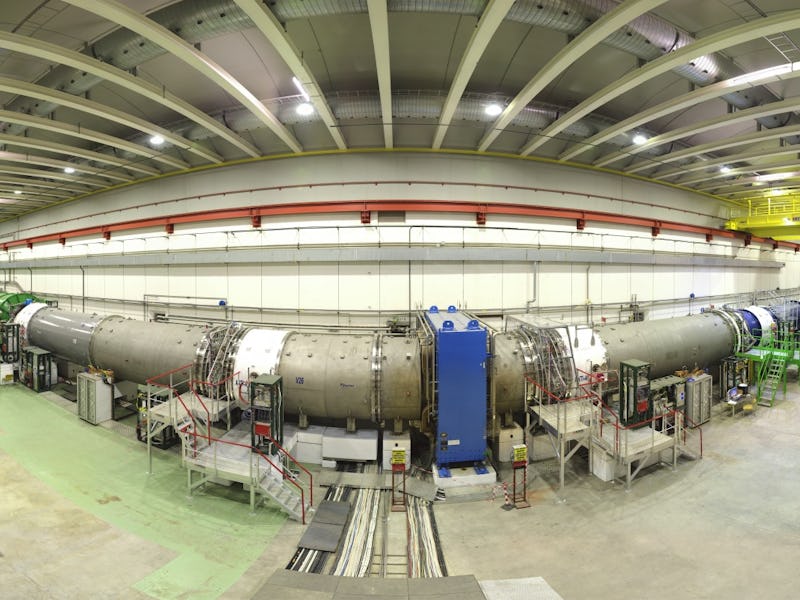Physicists Just Observed A One in 10 Billion Chance Event — And It Could Shake Up the Foundation of Modern Physics
Explaining what they saw could reveal something new about how the universe works.

Scientists at CERN spent the last decade waiting for a one-in-ten-billion chance event, and now they’ll spend the next few years figuring out whether it challenges the laws that (we think) govern the smallest building blocks of matter.
Most people who aren’t particle physicists have probably never heard of a kaon, but this tiny subatomic particle could present a big challenge to the Standard Model: the theory that describes the fundamental forces of nature and names all the smallest building blocks of matter, or elementary particles. University of Birmingham physicist Evgueni Goudzovski and his colleagues spent about a decade watching what happened when kaons decayed, and they found that about 1.3 times out of 10 billion, a decaying kaon splits into another subatomic particle called a pion, along with a pair of extremely small, elusive particles called a neutrino and an anti-neutrino. (The rest of the time, kaons decay into different products.)
That’s a staggeringly rare event. As such, it took physicists an extremely long time to see it in action. But the Standard Model predicts it should be even rarer: less than 1 in 10 billion. Figuring out the difference could reveal something fundamental about how the universe works — something we’ve been missing for decades.
Goudzovski and his colleagues presented their work during a recent seminar at CERN.
Researchers at CERN affectionately refer to the NA 62 experiment as “the kaon factory.”
Tiny Particles and Big Questions
To find out how kaons decayed, Goudzovski and his colleagues fired a high-intensity beam of protons at a target. We think of protons as the building blocks of atoms, but protons are made of even smaller particles called quarks. Quarks also make up neutrons, kaons, pions, and a lot of other subatomic particles. When a proton slams into something at high speed, the proton breaks apart into different combinations of quarks. And then all those bits of former proton go flying into a detector designed to identify them all.
Goudzovski and his colleagues found out that when you smash a bunch of protons about 6 percent of the debris will be kaons and the particles they decay into (the more you know!) So even with 1 billion particles hitting the detector every second, it took a long time to go through enough kaons to find the super rare one that produced a pion and a neutrino-antineutrino pair. Kaons decay into those particular particles so rarely that Goudzovski and his colleagues’ experiment is the first time anyone has ever seen evidence of it happening.
Most subatomic particles eventually decay, or break down into other, smaller particles. Kaons, in particular, are interesting to watch, because their decay can reveal a lot about physics right at the edge of what the Standard Model describes.
But it still happens a tiny bit more often than the Standard Model predicts — about 50 percent more often, in fact. That could mean that physicists have left a previously-unknown rule out of the Standard Model, which would be a tremendous discovery. On the other hand, it could also mean that some previously-unknown subatomic particle found its way into the mix and increased the chances of kaons decaying in this particular weird way — which would also be a pretty cool discovery, but not as cool as shaking up the whole foundation of modern physics.
Goudzovski and his colleagues are crashing more protons into things at CERN to find out, and they expect to have an answer within the next few years.